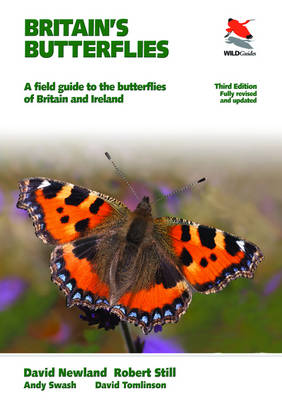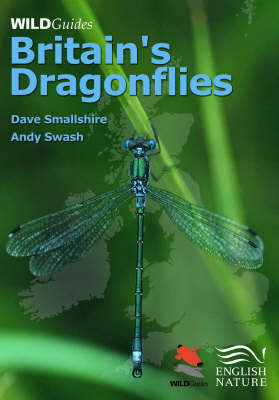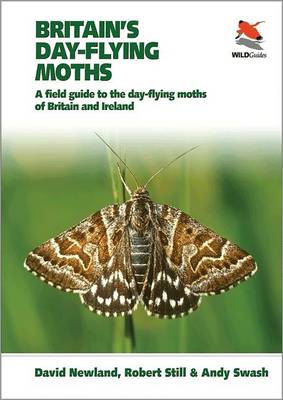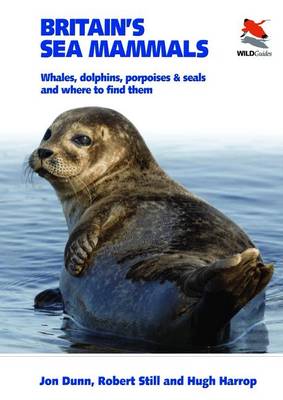Britain's Wildlife
5 total works
Britain's Butterflies is a comprehensive and beautifully designed photographic field guide to the butterflies of Britain and Ireland. Containing hundreds of stunning colour photographs, this revised and updated edition provides the latest information on every species ever recorded. It covers in detail the identification of all 59 butterfly species that breed regularly, as well as four former breeders, 10 rare migrants and one species of unknown status. The easy-to-use format will enable butterfly-watchers--beginners or experts--to identify any species they encounter. * Stunning colour plates show typical views of each butterfly species, including the various forms and aberrations* Detailed species profiles cover adult identification; behaviour; habitat requirements; population and conservation; egg, caterpillar and chrysalis; and status and distribution, including up-to-date maps* Photographs of egg, caterpillar and chrysalis for every breeding species* Sections on biology, where to look for and how to identify butterflies and other essential information
Britain's Dragonflies is the only comprehensive photographic field guide to the damselflies and dragonflies of Britain and Ireland. Written by two of Britain's foremost experts, this fully revised and updated edition features hundreds of stunning images and identification charts covering all 56 resident, migrant and former breeding species, and seven potential vagrants. The book focuses on identification--both of adults and larvae--highlighting the key features. Detailed species profiles provide concise information on identification, distribution, flight periods, behaviour, habitat, status and conservation. Other sections cover biology; how to watch, photograph, record and monitor Dragonflies; conservation status and legislation; and introduced exotic species. This redesigned, updated and expanded edition features: * Beautiful colour plates showing males, females, immatures and all colour forms for every species * Over 450 stunning photographs and 550 illustrations * Up-to-date species profiles and distribution maps * Detailed, easy-to-use identification charts for adults and larvae
Britain's Day-flying Moths
by David Newland, Robert Still, and Andy Swash
Published 29 September 2013
This concise photographic field guide will help you identify any of the 100 or so day-flying moths found in Britain and Ireland. Combining stunning photographs, authoritative text, and an easy-to-use design, this book makes a perfect traveling companion--one that will increase your enjoyment of these colorful and intriguing creatures. Like butterflies, some moths fly regularly in sunshine, whereas others that usually fly only at night are readily disturbed from their resting places during the day. This guide describes all of these species, with at least one photograph of each in its natural, resting pose. The text includes a brief description of each moth, with details of its life history, where and when to look for it, its status, the food plants of its caterpillars, and its special features. Introductory sections cover many topics, including how to distinguish moths from butterflies; classification; life cycle and behavior; ecological importance; the impact of habitat and climate change; recording and monitoring; and conservation. * Individual accounts for some 100 species * Stunning photographs of every moth, as you see them * Attractive, easy-to-use, and accessible design
Britain's Sea Mammals is the essential field guide to all the sea mammals--whales, dolphins, porpoises, and seals--found in coastal Britain. The book features more than 100 stunning photographs and close to 40 detailed and beautiful illustrations of 34 species of sea mammals, paying special attention to the 14 species most readily seen and most likely to be encountered. Factoring in behavior and locations, introductory chapters look at sea mammal biology and ecology, and how, when, and where these creatures can be spotted. Species accounts highlight key identification characteristics and include information on status, habitat requirements, and distribution. Handy and informative, Britain's Sea Mammals is the ideal guide to sea mammal watching in the United Kingdom.
* The only guide that focuses on the 34 species of sea mammal recorded in Britain, particularly the 14 most readily seen species * More than 100 photos and almost 40 illustrations highlight species, their behavior, and locations * Introductory chapters explore how, when, and where to look for sea mammals * Species accounts highlight key identification features, including information on status, habitat requirements, and distribution
* The only guide that focuses on the 34 species of sea mammal recorded in Britain, particularly the 14 most readily seen species * More than 100 photos and almost 40 illustrations highlight species, their behavior, and locations * Introductory chapters explore how, when, and where to look for sea mammals * Species accounts highlight key identification features, including information on status, habitat requirements, and distribution
Britain's Mammals
by Dominic Couzens, Andy Swash, Robert Still, and Jon Dunn
Published 25 April 2017
Britain's Mammals is a comprehensive and beautifully designed photographic field guide to all the mammals recorded in the wild in Britain and Ireland in recent times--including marine mammals, bats and introduced species that have bred. The book features hundreds of stunning photographs and incorporates invaluable tips and suggestions to help you track down and identify even the most difficult species. This easy-to-use book provides an introduction to the different types of mammal. Concise species accounts focus on identification and include up-to-date information on sounds, habitat, food, habits, breeding behaviour and population and status, as well as descriptions of key field signs--including tracks, droppings and nests--that give away the presence of mammals even when they are out of sight. In addition, guidance is provided on ways of studying and observing mammals--including small-mammal trapping, bat detecting and whale watching--as well as mammal conservation, legislation and further sources of useful information. Handy and informative, this guide is the ideal companion for anyone interested in watching mammals in Britain and Ireland.
* Comprehensive coverage of every mammal recorded in Britain and Ireland *500 superb colour photographs carefully selected to show key identification features * Up-to-date distribution maps * Detailed illustrations of tracks, dentition and other identification features * Helpful tips for identifying tracks and other signs you may find in the field * Latest information on status, population, distribution and conservation designations * Advice on finding and watching mammals
* Comprehensive coverage of every mammal recorded in Britain and Ireland *500 superb colour photographs carefully selected to show key identification features * Up-to-date distribution maps * Detailed illustrations of tracks, dentition and other identification features * Helpful tips for identifying tracks and other signs you may find in the field * Latest information on status, population, distribution and conservation designations * Advice on finding and watching mammals




